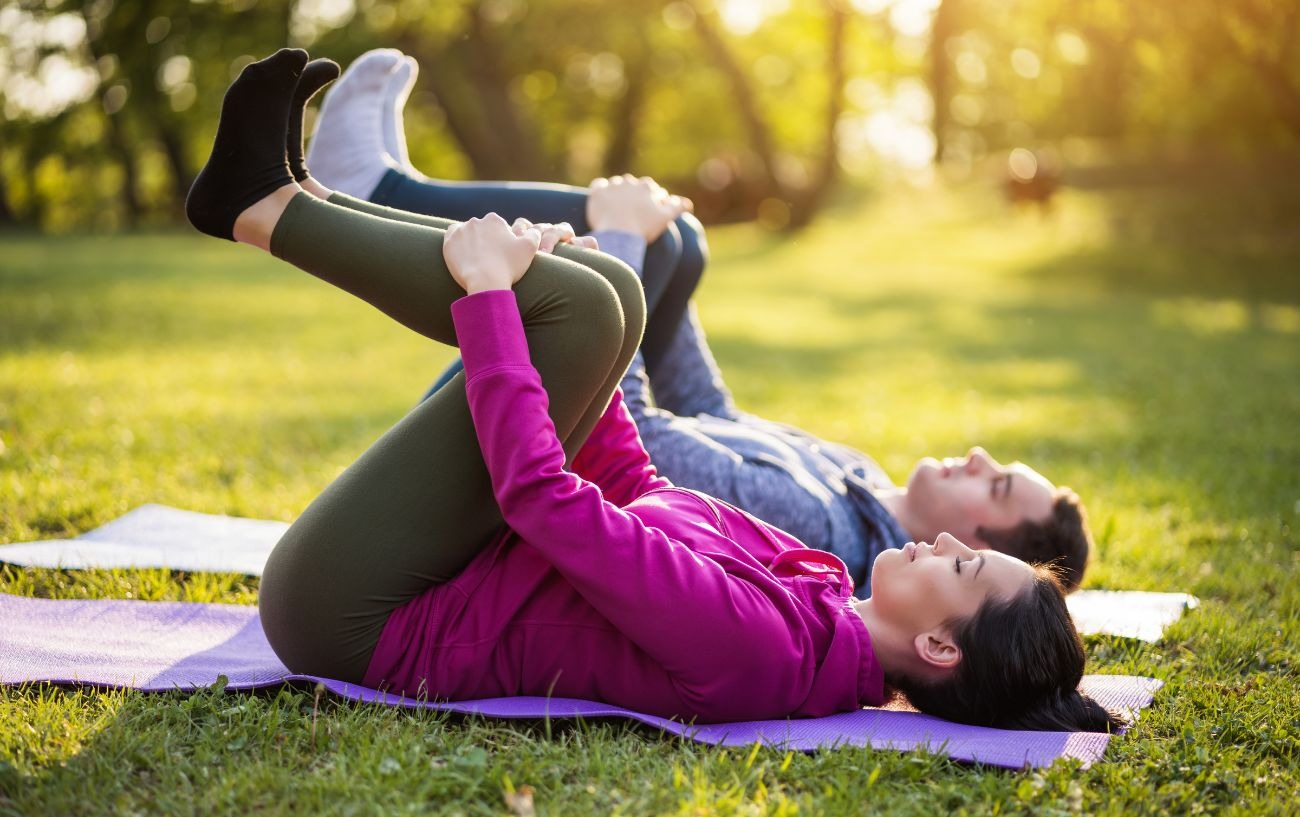Lower back pain is common and caused by poor posture, muscle imbalances, or a sedentary lifestyle. Consult a healthcare professional for personalised advice. Incorporate targeted exercises into your daily routine to alleviate symptoms and improve back health. These exercises aim to strengthen core muscles, enhance flexibility, and alleviate tension in the lower back region.
It’s essential to approach these exercises gradually and listen to your body, avoiding any movements that exacerbate discomfort. back pain treatment Ashford focuses on personalised care, including tailored exercises for daily relief, ensuring effective lower back pain management. It is important to keep in mind that individual responses vary, and seeking professional guidance ensures a safe and effective approach to managing lower back pain.
Pelvic Tilts:
Pelvic tilts are a fundamental exercise in addressing lower back pain as they specifically target the muscles supporting the lumbar region. This simple yet effective movement involves lying on your back, engaging your abdominal muscles, and gently pressing the lower back into the floor. By doing so, pelvic tilts help stabilise the spine, improve flexibility, and alleviate tension in the lower back.
These exercises also promote a better understanding of pelvic alignment, encouraging proper posture to prevent strain. When incorporated into a daily routine, pelvic tilts contribute to overall lower back health, offering relief and supporting long-term well-being.
Cat-Cow Pose:
The Cat/Cow pose is a dynamic stretch that plays a crucial role in alleviating lower back pain. In this exercise, practitioners transition between arching the back (Cow position) and rounding it (Cat position), promoting flexibility and mobility in the spine. The gentle, flowing motion helps increase blood flow to the lower back and surrounding muscles, reducing stiffness and tension.
By engaging the core and promoting a full range of motion, the Cat/Cow pose not only stretches but also strengthens the back muscles. When incorporated into a daily routine, this exercise contributes to improved posture, reduced discomfort, and enhanced overall spine health.
The Child’s Pose:
The Child’s Pose is a fundamental yoga stretch renowned for its role in alleviating lower back pain. In this restorative position, one kneels with toes touching and knees apart, then leans back, extending arms forward on the floor. This gentle stretch helps elongate the spine, promoting flexibility and relieving tension in the lower back muscles.
By encouraging relaxation and proper alignment, the Child’s Pose can contribute to the reduction of discomfort associated with lower back issues. Regular incorporation of this exercise into a daily routine may aid in fostering a more resilient and pain-free lower back over time.
The Glute Bridge:
The Glute Bridge serves as a valuable exercise for alleviating lower back pain by targeting the core and posterior chain muscles. This exercise effectively engages the glutes, hamstrings, and lower back, promoting stability and strength in the lumbar region. As the hips are lifted off the ground during the bridge, it activates the gluteal muscles and helps decompress the spine.
Strengthening these muscle groups contributes to better posture and support for the lower back, potentially reducing discomfort. Incorporating the Glute Bridge into a daily routine may enhance overall spinal health, making it a beneficial element in a comprehensive lower back pain relief strategy.
Knee-to-Chest Stretch:
The Knee-to-Chest Stretch is a vital component of lower back pain relief exercises. This gentle stretch targets the lower back, helping to alleviate tension and improve flexibility. By bringing one knee towards the chest and holding the position, the stretch releases tightness in the muscles of the lower back and buttocks. It promotes relaxation and enhances the range of motion in the spine.
Incorporating the Knee-to-Chest Stretch into a daily routine can contribute to overall back health by reducing discomfort and promoting better posture. However, it’s crucial to perform the stretch with caution and consult a healthcare professional if there are any concerns or pre-existing conditions.

The Piriformis Stretch:
The Piriformis stretch targets the piriformis muscle, which connects the lower spine to the thigh bone, to relieve lower back pain. Tightness in this muscle can contribute to discomfort and radiating pain in the lower back and buttocks. Engaging in regular Piriformis stretches helps release tension in the muscle, improving flexibility and reducing strain on the lower back. By incorporating this stretch into a daily routine, individuals may experience increased mobility, enhanced posture, and a potential reduction in lower back pain. Consult a healthcare professional to ensure the exercises are suitable for you.
Seated Spinal Twist:
The Seated Spinal Twist is a beneficial lower back pain relief exercise that targets the lumbar spine, hips, and lower back muscles. By gently rotating the spine, this stretch helps improve flexibility and releases tension in the lower back area. The twisting motion engages the muscles around the spine, promoting better circulation and reducing stiffness.
Additionally, the Seated Spinal Twist encourages proper alignment and posture. When performed regularly, it can contribute to the overall well-being of the lower back, alleviating discomfort and promoting a greater range of motion. If you have any existing health concerns, always consult a healthcare professional before incorporating new exercises.
Incorporating these lower back pain relief exercises into your daily routine may contribute to improved flexibility, strength, and overall well-being. It is important to consult a healthcare professional before beginning any exercise program, especially if you have existing health problems.
These exercises focus on promoting core strength, flexibility, and gentle stretching, aiming to alleviate tension in the lower back. Additionally, complementing these exercises with a healthy lifestyle, including proper ergonomics and posture, can further support long-term lower back health.
Also, read this:
7 Lower Back Pain Relief Exercises for Daily Relief
